Water Oak
Quercus nigra L.
Description
Water oak is a member of the beech family (Fagaceae) and is a deciduous tree with a spreading, rounded open canopy that can spread 60-70 feet wide ¹. It can reach between 60 to 80 feet in height with a drink ¹. The trunk is reddish-brown color, is brown and smooth when the tree is young, and changes to a gray-black color as it matures ¹. While a fast growing tree, it may live only 30 to 50 years 12. Leaves are entire with three shallow lobes and small, sometimes indistinct, bristles ¹. Leaf blades are 2-4 inches in length, with a green and shiny upper surface and paler green lower surface ¹. In the fall, the leaves change to a yellow color ¹. Its unisexual flowers occur on the same tree in the spring with a yellow-brown male catkins and indistinct female flowers. Its brown acorns take 2 years to mature 5. Acorns are one-half inch with a cap covering 1/3 or less of its length ¹. 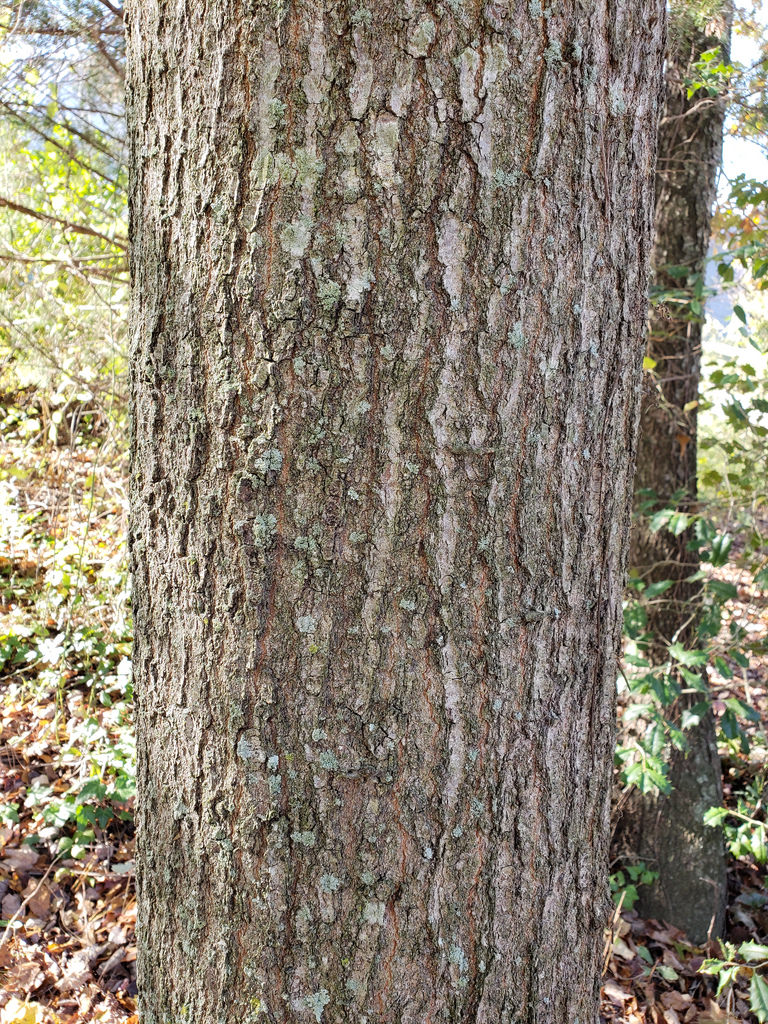
Mature trunk of water oak. @ B. Hubick*, Maryland Biodiversity Project 6
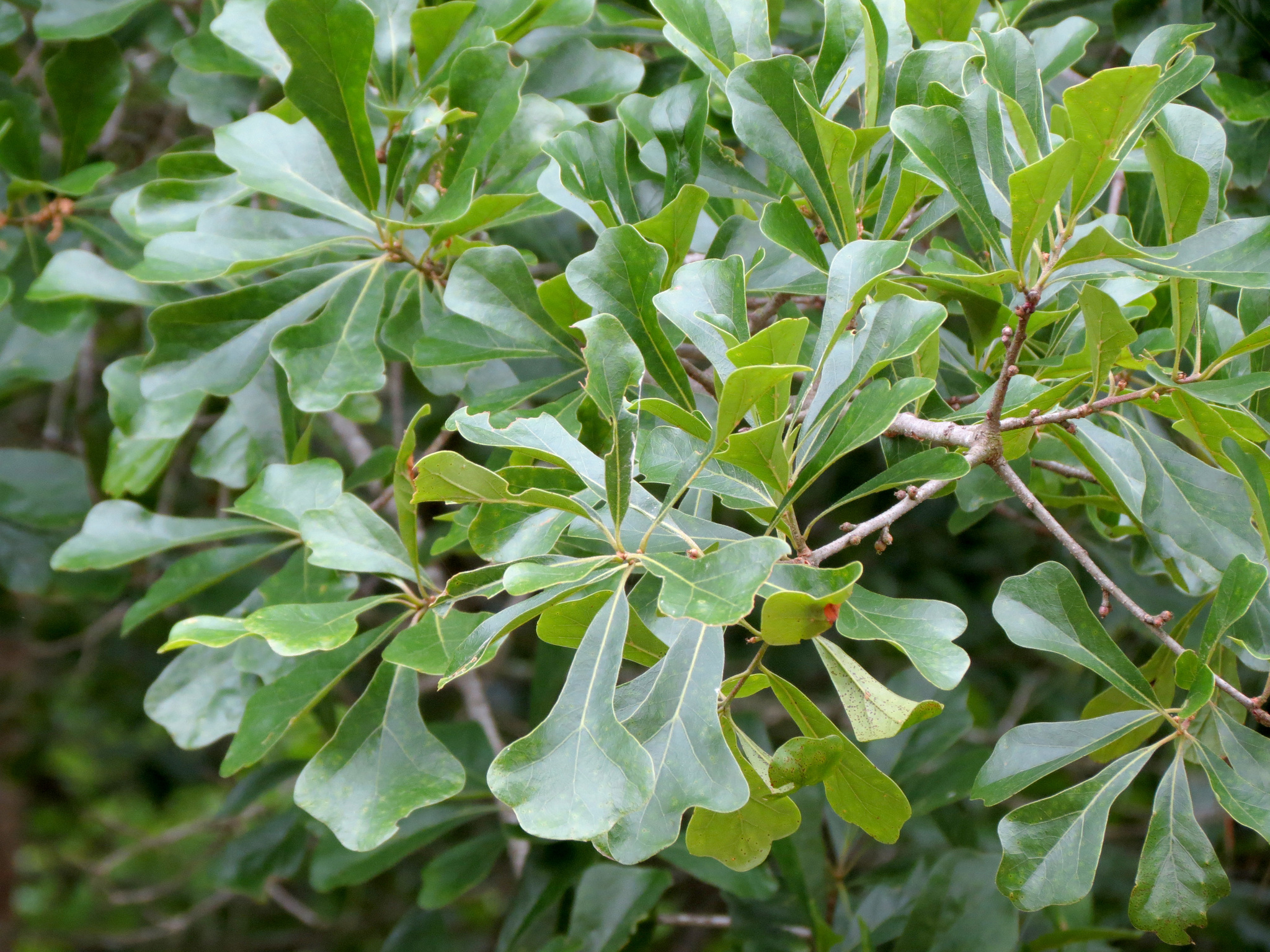
Leaves of water oak. @ K. Schultz 2019 (CC BY-NC), Maryland Biodiversity Project6
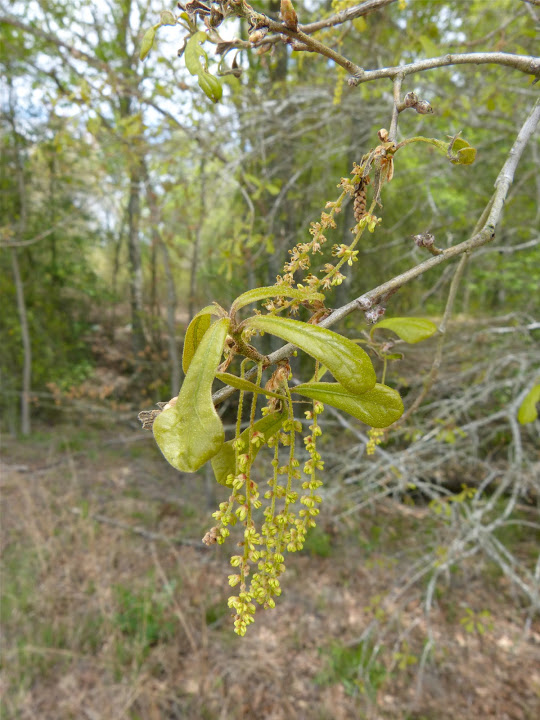
Male flowers in catkins of water oak. @ J. Brighton*, Maryland Biodiversity Project 6
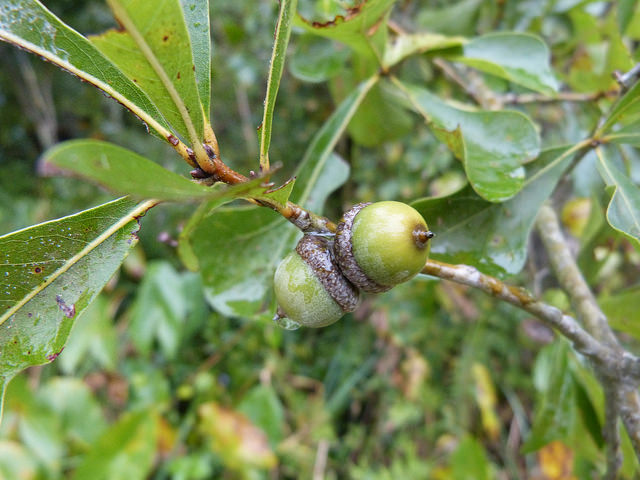
Acorns of water oak. @ J. Brighton*, Maryland Biodiversity Project 6
Distribution
This tree is found along the Coastal Plain in the southeastern United States from New Jersey to northern Florida and east to Texas Oklahoma and Arkansas 4. In Maryland these trees can typically be found in the lower Eastern Shore6. They can survive in an urban environment, and are often seen as highway medians or on streets where there are no sidewalks ¹. They are sensitive to sulfur dioxide pollution 4.
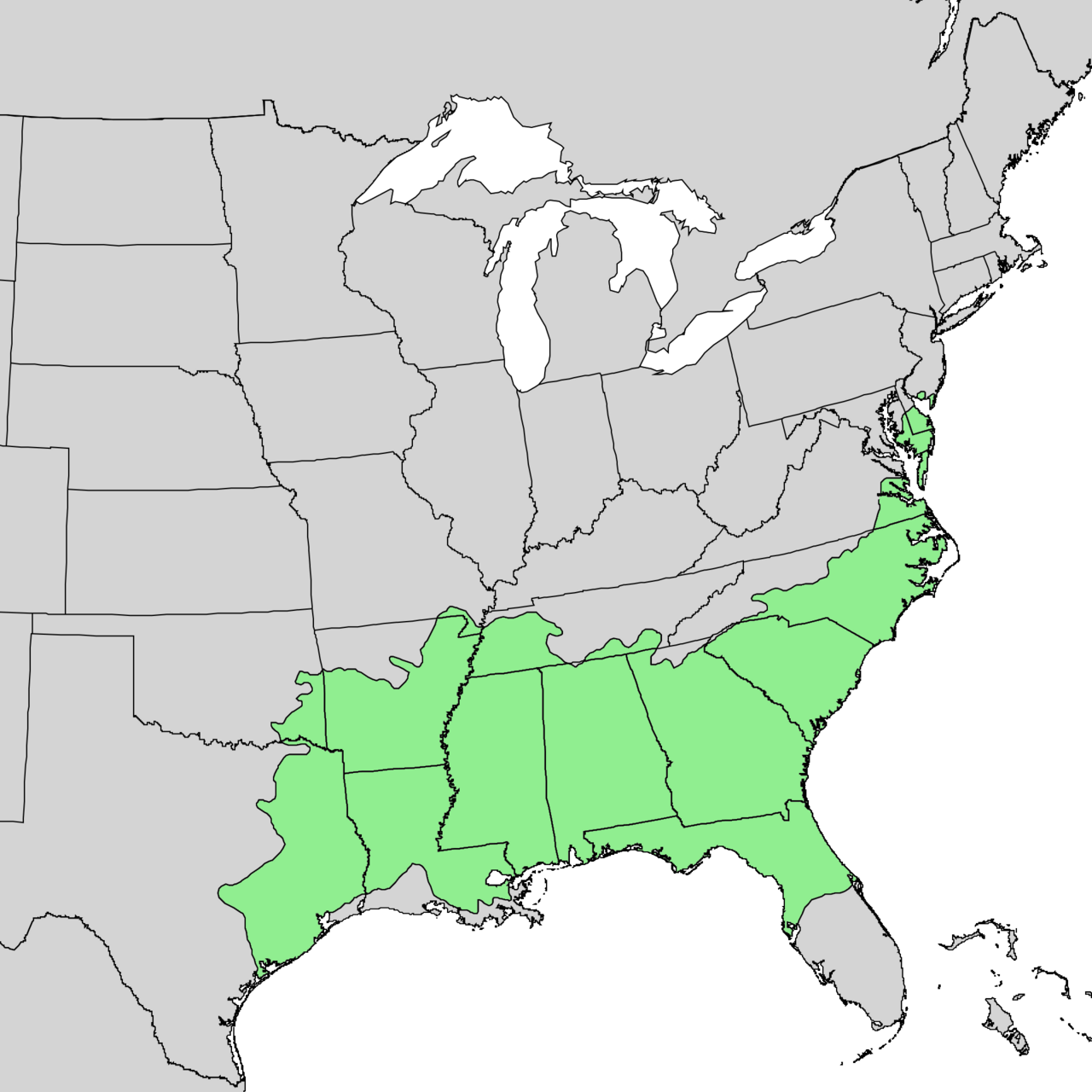
Natural range of water oak 10
Wildlife Importance
The acorns produced by the water oak serve as a good food source for wildlife ¹. Many animals such as raccoon, mice, wild turkey, and white-tailed deer all eat its acorns ². Water oak can also provide a habitat for smaller cavity-nesting animals such as red-bellied woodpeckers and squirrels 4. Water oak is a larval host for a variety of butterflies and moths, including Horace’s Duskywing, White M Hairstreak, and Northern Hairstreak 11.
Economic Importance
Timber, fuel, and a plywood for fruits and vegetable containers are some of the ways that water oak can be used for economic gain ³. Water oak can also be used to treat ailments such as diarrhea, eczema or canker sores 8. The root system of the water oak can also stabilize the soil to prevent erosion 9. This is economically beneficial, because erosion has a negative impact on farm production 9.
Threats
Water oak is a very sensitive tree, that is vulnerable to illness, and pests 4. Their numbers have unfortunately been declining due to negative human interactions ². This includes actions like row-cropping or extensive clearing ². Water oak does not compete well with other species for nutrients needed to grow ³. It is also easily injured by fire and susceptible to butt rot ³.
Interesting Facts
- Water oak is susceptible to air pollution 4. This is especially tricky since these plants are found in high human traffic areas with a lot of air pollution.
- If a water oak seedling does not get adequate sunlight it grows 1.9 inches a year 4. This is atypical, as they can grow 24 inches or more a year– even under unfavorable conditions 4.
- Water oak can also be referred to as “pin oak” in Texas because it shares many similarities with true pin oak (Quercus palustris) 5. Only the leave shape of both species differ 5.
- The Water oak was often used by native Americans for food and medicine 12.
- The fruits and leaves are slightly poisonous to humans until the tannins are leached or boiled out 12.
References
- University of Florida Extension: Quercus nigra
- Missouri Department of Conservation: Water oak
- USDA Forest Service Silvics, Vol. 2, hardwoods: Quercus nigra
- USDA Forest Service Fire Effects Information System: Quercus nigra
- Trees of Texas: Water oak
- Maryland Biodiversity Project: Water oak
- Flora of North America: Quercus nigra
- Peace Health: Oak
- Washington State University Extension, Shore Stewards: Using plants & trees for stability
- Wikipedia: Quercus nigra
- Lady Bird Johnson Wildflower Center: Quercus nigra
- North Carolina State Extension: Quercus nigra
* Imaged used with permission of photographer.
Contributed byT. Rhamdeow and L. Vanderbeek
